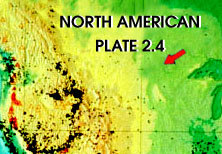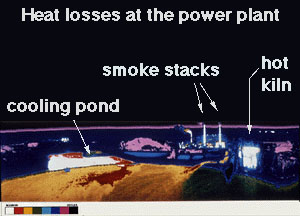Exploratour - The Surface of the Earth
This is a schematic showing the speed (in the numbers indicated at cm/year) at which the plates slip past each other. Some move faster than others.
Click on image for full size
The American Geophysical Union. Further reproduction is prohibited.
Click on image for full size
The American Geophysical Union. Further reproduction is prohibited.
The Earth's Moving Plates
One might wonder how the plates can move on the surface of the Earth at that rate. The plates seem to be sufficiently slippery that they can "slip" past each other with ease. It is only when the plates are not sufficiently slippery, and have gotten stuck against each other, that an earthquake occurs.It is only when the forces driving plates past each other build up sufficiently to "break" the plates apart, that the plates can rebound in an earthquake. Earthquakes can move sections of a plate several feet at once rather than the gradual centimeter or so which is their normal slip rate. The picture to the left gives the speeds at which the some of the plates slide past each other. Click on the image to the left to bring up the full size picture.
Last modified August 17, 2006 by Lisa Gardiner.












